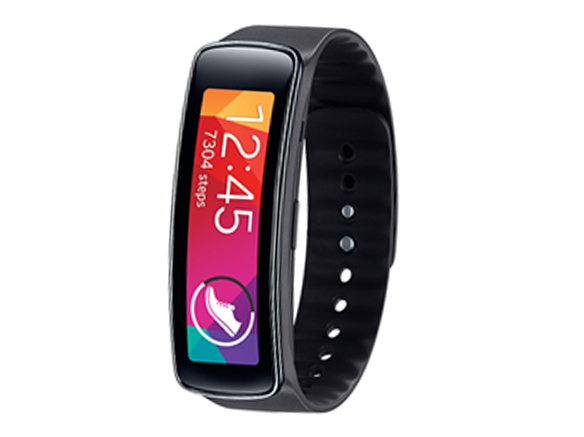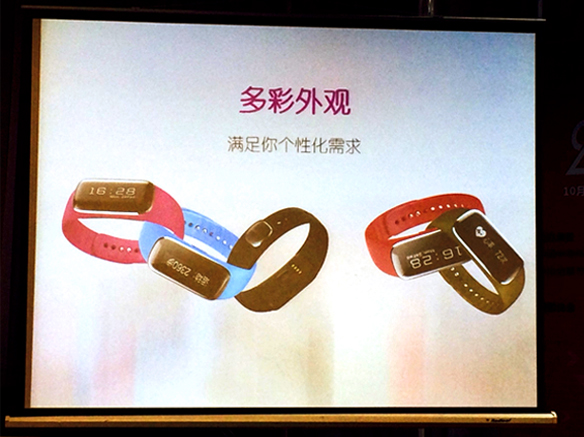I was at the CEF electronics show in Shanghai a few days ago and visited a forum called “Wearable Technology Development and Making”. A designer/engineer from Desay vaguely described his inspiration behind its newly developed product. He described how he overheard a little child talk about her aspiration to get a Nike Fuelband approximately 1-2 years ago. The girl kept asking her parents to buy one of these devices because it could monitor sleep, calories burnt and also heart rate. Following this, the designer/engineer was inspired to develop his own version of the device that had identical features, which he called ‘Fitband’.
![]()
![]()
Featured image: Wearable Technology Development and Making forum, image credit: PDD. Images above: Fitband wearable tech, fitness and wellbeing tracker from Desay, image credit: Sina blog
He continued to describe the Fitband from features to form factor. The two models developed took the form of wrist worn devices. To someone familiar with tech brands such as Nike or Samsung, one model looked visually alike to the Nike Fuelband, and the other visually alike to Samsung’s Gear Fit™ device, both of which were released at least one year ago.

Samsung Gear™ Fit – fitness band. Image credit: Samsung

CEF show Shanghai 2014. Image credit: PDD
The intent of this blog wasn’t to draw attention to how similar the product looked compared to the other wearable devices on the market. I wanted to investigate and understand how these brands survive and how they thrive if they want to expand in a global market place.
With a population of 1.35 billion, China has already overtaken USA as the largest economy in the world. However, the purchasing power of individual consumers is still much lower than in other developed countries. These local Chinese tech companies have the technology and capability to achieve similar features and quality of those global brands. In fact, imagine if a local brand is already making its desired profits with little to no investment on design, why take the risk to invent anything new? If innovation is to improve people’s quality of life, these 2nd or 3rd tier companies are offering affordable solutions to achieve just that. The basic technology behind many of these wearable devices is becoming more and more of a commodity as the industry develops, the sharing platforms are simply different from one country compare to another. We cannot just look at a product from an aesthetic perspective and should acknowledge its positive social impact (which can sometimes be hard for us designers).
Let’s set this wearable bracelet topic aside for the moment and speak of the Smart Phone market in China. Since a majority of Chinese consumers are on a low income, they seek good quality local branded products that offer good features at a low cost. Successful cases such as Xiaomei, a Chinese Smart Phone manufacturer who produce great phones at a low price, may be seen to ‘copy’ other brands from a Western view point, but I prefer looking at it from an alternative perspective. I like to define it as ‘customised-innovation’ that is ‘cost acceptable’ for the greater public. Smaller companies will learn and understand that just copying will not make them an industry leader.
Friedman said it best in his book The World is Flat: ‘Companies that were paying attention understood they were witnessing the birth of the “self-directed consumer”, because the internet and all the other tools for the flat world had created a means for every consumer to customise exactly the price, experience, and service he or she wanted.’ The word ‘internet’ has a slightly different meaning in China compared to the rest of the world. Let’s not forget that Google, Facebook, Twitter and YouTube are disabled in China unless used through a VPN connection. I see that smaller brands have more flexibility in satisfying the local needs of consumers compared to some of the larger less agile global brands. By being closer and locally embedded they are able to hear and understand the nuances of the culture they are designing for, reacting to them quickly and efficiently.
As I mentioned before, technologies have become a commodity and aesthetics are no longer a guaranteed means to differentiate global brands from local brands. I am not suggesting local brands should copy, or that global brands do not bring their own set of values to products and services that local brands just cannot match. I believe that global brands should continue to innovate towards consumer needs and focus on user experience; while hardware and software can be copied the user experience is key point of differentiation that brands can leverage. Whereas for local brands, the ability to understand the global world and use it to adapt to local consumer needs will set them apart from other players within their own highly competitive and fast moving marketplace.
That sums up my observation over the weekend.


